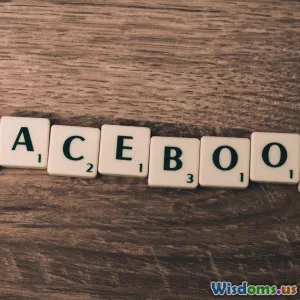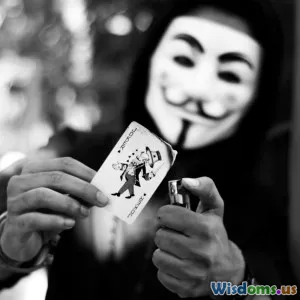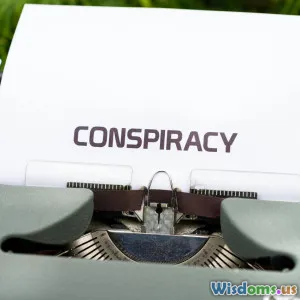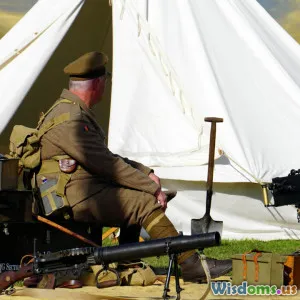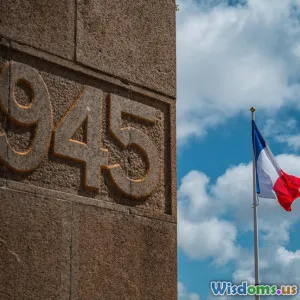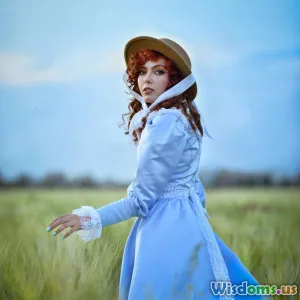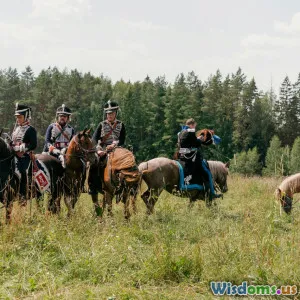
Hidden Symbols in Everyday Life Linked to Mysterious Organizations
9 min read Explore the fascinating hidden symbols in daily life linked to mysterious organizations and their secret meanings. (0 Reviews)
Hidden Symbols in Everyday Life Linked to Mysterious Organizations
Introduction
Have you ever looked at a corporate logo, a building’s facade, or even your local currency and felt that there’s more than meets the eye? Hidden in plain sight, symbols linked to secret societies and mysterious organizations whisper untold stories about power, influence, and historical connections. These symbols, often dismissed as mere decoration or branding, are intentionally placed to convey allegiance, establish identity, or signal esoteric knowledge. This article explores the intriguing world of these hidden marks embedded in everyday life, providing insights into their origins, meanings, and why they still captivate the collective imagination.
The Origins of Symbolic Secrecy
Humans have used symbols to communicate abstract ideas since prehistoric times. Secret societies, from the Freemasons to the Illuminati, elevated this practice by embedding symbolism in rituals, architecture, and communication. This usage served several purposes: maintaining secrecy, forging group identity, and exerting influence.
Freemasonry: A Case Study
The Freemasons, one of the most famous secret societies, utilize a rich tapestry of symbols—from the Square and Compasses to the All-Seeing Eye. These icons appear on buildings, monuments, and even currency, such as the US one-dollar bill. The Founding Fathers of the United States, some of whom were Freemasons, incorporated many of these emblems into American iconography, hinting at the society’s foundational influence.
Illuminati and Modern Conspiracy
The Illuminati, often characterized as a shadowy cabal of elites shaping world events, have also contributed to popular awareness of hidden symbolism. The pyramid with the Eye of Providence on the dollar bill is frequently cited. Though the historical Bavarian Illuminati disbanded centuries ago, the myth draws attention to how symbols serve as a narrative framework for secret power.
Hidden Symbols in Corporate Logos
Many modern corporations use symbolism related to secret organizations, either overtly or subtly, as a marketing strategy or to invoke authority.
The All-Seeing Eye and Triangles
For example, the All-Seeing Eye—centered within a triangle—is associated with vigilance and divine providence but also with Masonic symbolism. The eye appears in logos like CBS and various luxury brands, evoking mystery and heightened awareness.
The Dove, Owl, and Other Animal Symbols
Other animals frequently used have symbolic meanings. The owl, linked to wisdom and the Greek goddess Athena, appears in the logo of the early version of the New World Order concept and is often interpreted as representing hidden knowledge.
Brand Examples
- Apple: The iconic apple with a bite is subject to various theories. While officially it references Isaac Newton or knowledge (as in the biblical fruit of knowledge), some conspiratorial viewpoints tie it to Illuminati symbolism.
- NBC: Its peacock logo may symbolize resurrection and immortality, concepts sometimes linked to esoteric traditions.
While many of these interpretations remain speculative, their recurrence suggests a deliberate use of symbols that tap into deep cultural archetypes.
Public Monuments and Architecture: Figures in Stone
Cities worldwide house monuments that contain esoteric symbols imbued with meaning tied to secret orders.
Washington, D.C.'s Symbols
Notably, the Washington Monument's shape is often analyzed as an obelisk—a symbol borrowed from ancient Egyptian and Freemasonic traditions representing the connection between earth and the divine.
The layout of the National Mall and surrounding buildings is also said to mirror Masonic symbols or planetary alignments, although academic consensus remains divided.
Cathedrals and Religious Sites
Gothic cathedrals, with their flying buttresses and intricate stained glass, incorporate numerology and symbolic geometry connected to alchemical or secret philosophical teachings.
For example, Notre-Dame de Paris’ famed rose windows contain mandala-like structures that symbolize spiritual wholeness, a motif echoed in alchemical illustration and mystical practices.
Currency and Hidden Messages
Currency offers a surprisingly rich canvas for symbolic expression. The US dollar bill, in particular, reveals layers of meaning:
- The Great Seal: The obverse features the American bald eagle holding arrows and an olive branch, symbolizing war and peace. The reverse contains the unfinished pyramid and the All-Seeing Eye.
- Latin mottos: Such as "Annuit Coeptis" (He approves our undertakings) and "Novus Ordo Seclorum" (New order of the ages) echo several theories linking America’s founding to esoteric or Masonic ideals.
These images foster national identity and unity but also fuel theories about hidden agendas and power structures.
Psychological and Social Impact of Symbolism
Why do these signs persist and exert influence? Symbols communicate on a subconscious level, resonating emotionally through collective archetypes.
Carl Jung famously argued that symbols in myths and rituals reveal universal psychological truths. Secret societies exploit this power to create mystique and deepen loyalty among members.
Moreover, these symbols serve as cultural shorthand: they instantly convey complex ideas, values, and loyalties without words, effectively shaping group identity and social dynamics.
How to Recognize and Interpret Hidden Symbols
Educate Yourself on Symbolic Systems
Understanding Freemasonry, alchemy, and occult iconography gives clues for deciphering modern hidden symbols.
Context Matters
While certain symbols recur, their meaning varies by culture, era, and setting. Considering historical and organizational context is crucial.
Be Open Yet Skeptical
Not every triangle or eye is a conspiracy sign. Many designs stem from artistic or cultural traditions.
Conclusion
The presence of hidden symbols in everyday life connected to mysterious organizations reveals a rich tradition of storytelling, power projection, and secrecy. From ancient lodges to modern corporate branding, these signs shape perceptions, invoke curiosity, and perpetuate mysteries that continue to captivate us. Whether embraced as cultural heritage or viewed with suspicion, such symbols remind us that beneath the surface of the ordinary lies a layer of meaning waiting to be uncovered.
By paying attention to the symbols embroidered into the fabric of our world, we not only gain insight into hidden histories but also sharpen our critical thinking and appreciation for the complexity of human expression.
References
- Dobbs, Michael. The Secret History of the Freemasons. Penguin Books, 2006.
- Knight, Christopher. The Brotherhood: The Secret World of the Freemasons. St. Martin's Press, 2014.
- Jiménez, David. "Symbolism in Modern Corporate Logos." Journal of Visual Culture, 2019.
- Jung, Carl G. Man and His Symbols. Dell Publishing, 1964.
- The United States Mint – Symbolism in Coin Design, https://www.usmint.gov/learn/coin-and-medal-programs/coin-design-challenges
Unlocking hidden symbols encourages us to see the world with new eyes—where the familiar reveals the profound.
Rate the Post
User Reviews
Popular Posts










